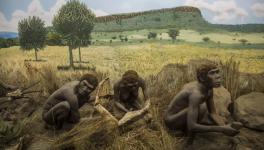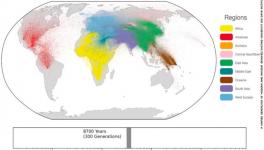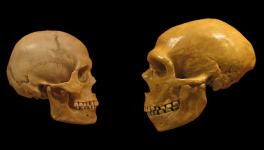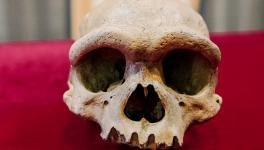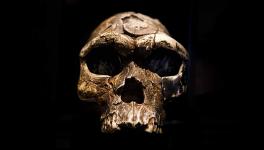Did Humans Domesticate Themselves?
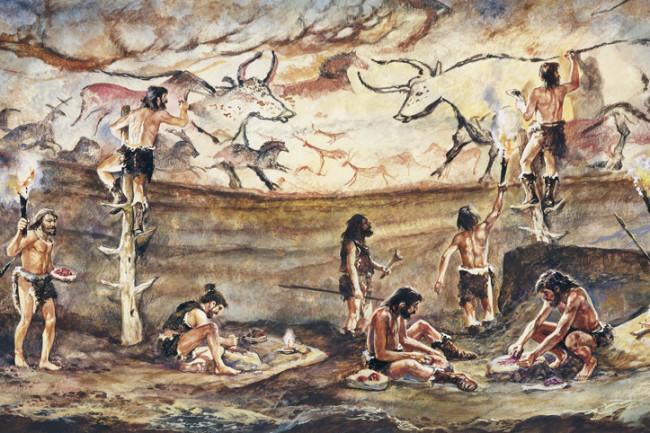
Image Courtesy : Discover Magazine
The available evidence provides knowledge about the domestication of dogs, cats, sheep, and cattle by humans. But did humans domesticate themselves? Did evolution favourably select the domestication of human? A new study was conducted at the genetic level to find the answers to such questions, which has not only yielded interesting results, but also raised concerns among scientists.
The study, published in Science Advance recently, suggests that humans might have domesticated themselves after splitting from their extinct relatives, the Neanderthals and Denisovans, some 6,00,000 years back.
The idea that humans look very different from other primates as we have domesticated ourselves has been long-standing and the present study sheds some new light on it. A biological anthropologist from Harvard University, Richard Wrangham said that the study is incredibly impressive and is also a beautiful test of the idea of human domestication.
The domesticated variety of dogs and foxes, for example, have many changes that are physical, like smaller teeth and skulls, floppy ears, shorter and curlier tails. All these physical changes, as researches have shown so far, are attributable to fewer numbers of certain type of stem cells—the neural crest stem cells. In the behavioural level as well, the domesticated animals are friendlier and less aggressive than their wild counterparts.
Likewise, modern humans are also less aggressive and more cooperative than many of the ancestors. Along with the behavioural attributes, significant physical changes are also readily discernible, like smaller skulls though brains are bigger, less pronounced ridges and so on. These physical attributes indicate towards domestication, and the question of how did this process take place.
The team of researchers of the current study analysed a particular gene, the BAZ1B, which plays an important role in orchestrating the movements of neural crest stem cells. Most of us have two copies of this gene. But, in people suffering from Williams-Beuren syndrome, one copy of BAZ1B and other handful ones are found to be missing. The Williams-Beuren syndrome is linked to cognitive impairments with smaller skulls, elfin like facial features and a behavioural attribute of extreme friendliness.
The team of researchers first tried to decipher whether BAZ1B has any role to play in these facial features characteristic of the syndrome. They cultured 11 neural crest cell lines collected from four people with Williams-Beuren syndrome, four from people without the disorder and three from people with a different but related disorder where they have duplicates in place of deletions of the key genes. In the next step, they employed a variety of tools of tweaking BAZ1B’s activity up or down in each of the stem cell lines.
Also Read: Cooperation’ as a Crucial Factor in Human Language Evolution
The tweaking, they found, also affected hundreds of other genes involved in facial and cranial development. Overall, they found that “a tamped-down BAZ1B gene led to the distinct facial features of people with Williams-Beuren syndrome, establishing the gene as an important driver of facial appearance.”
The team analysed the BAZ1B sensitive genes in modern humans, two Neanderthals and a Denisovan. Their results show that in modern humans those genes have accumulated many regulatory mutations of their own. This is suggestive of the fact that natural selection helped shaping them. Interestingly, many of these same genes have also been under selection in other domesticated animals as well. From this, the team inferred that modern humans also might have undergone a similar process of domestication.
Richard Wrangham, the Harvard biological anthropologist, however, put a cautionary note saying –“What they’ve zeroed in on is one gene that is incredibly important … but it’s clear there are going to be multiple other candidate genes.” This means by studying only one gene, we should not read too much evolutionary linkage to it, that is the BAZ1B.
William Tecumseh Fitch III, an evolutionary biologist and cognitive scientist at the University of Vienna, also raised his apprehensions—“These are processes with both similarities and differences. I also don’t think mutations in one or a few genes will ever make a good model for the many, many genes involved in domestication.”
There are lot other hypotheses why humans may have domesticated. The most prominent one is that, early humans formed co-operative societies and evolutionary pressure favoured mates whose features are less aggressive.
Get the latest reports & analysis with people's perspective on Protests, movements & deep analytical videos, discussions of the current affairs in your Telegram app. Subscribe to NewsClick's Telegram channel & get Real-Time updates on stories, as they get published on our website.









